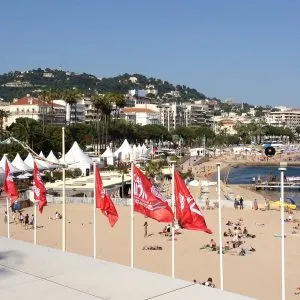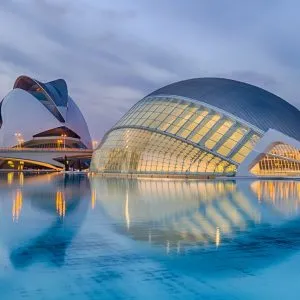Carcassonne, a charming medieval fortress city nestled along the tranquil Aude River, is not just a tourist destination but a living historical book. Each stone, each wall tells tales of heroism from centuries past. Are you ready to embark on a journey through time to uncover the majestic beauty and hidden secrets of Carcassonne, the sparkling emerald gem of Southern France?
Carcassonne: UNESCO’s Recognized Medieval Fortress City
Carcassonne, also known as Cité de Carcassonne, is a remarkable medieval architectural complex located on the right bank of the Aude River in the Aude department of France. With its massive fortifications stretching nearly 3 kilometers and featuring 52 sturdy watchtowers, a magnificent castle, and a historic church, Carcassonne is one of Europe’s most well-preserved fortified cities. In 1997, UNESCO officially declared it a World Heritage Site, cementing its invaluable historical and cultural significance.
The Glorious History of Carcassonne: A Witness to Time
Carcassonne’s history spans over 2,500 years, witnessing the rise and fall of civilizations and empires. Originally a settlement of the ancient Gauls, it became a notable city under Roman rule before coming under the dominion of the Visigoths and Saracens. By the 12th century, Carcassonne had evolved into the center of the Cathar faith, a religious movement deemed heretical by the Catholic Church.
During the Albigensian Crusade in the 13th century, Carcassonne endured fierce attacks. Thanks to its robust defenses and the courageous resistance of its people, the city remained unyielding against invaders. Post-crusade, Carcassonne was annexed to the Kingdom of France, becoming a critical border fortress that safeguarded French territory against incursions from Spain.
Discovering Unique Architecture: Immerse Yourself in Medieval Grandeur
Stepping into Carcassonne feels like entering a different world—a realm of valiant knights, graceful princesses, and enchanting fairy tales. The architecture of Carcassonne blends Roman, Gothic, and Renaissance styles harmoniously, creating a unique and stunning aesthetic.
Walls and Watchtowers: Testaments to Military Strength
Carcassonne’s fortifications are a monumental defensive structure encircling the entire city. Spanning nearly 3 kilometers, the stone walls rise between 12 to 15 meters in height and measure 2 to 3 meters thick. The walls are punctuated by 52 diverse watchtowers, forming a robust and adaptable defense system.

Comtal Castle: The Heart of the Fortress
Comtal Castle serves as the power center of Carcassonne, the residence of counts and lords. Constructed in the 12th century, its Gothic design includes numerous rooms, halls, and courtyards. Inside the castle, visitors can explore galleries displaying historical artifacts and artworks, offering insights into the life and culture of Carcassonne’s past.
Saint-Nazaire Basilica: A Symbol of Devotion
Saint-Nazaire Basilica is a pivotal religious landmark of Carcassonne, built in the 11th century. This Gothic masterpiece features soaring vaulted ceilings, vibrant stained-glass windows, and intricately sculpted statues. Within its walls, visitors can admire religious artworks including paintings, statues, and ornaments that reflect the deep faith and dedication of Carcassonne’s inhabitants.
Experiencing Carcassonne: Immerse Yourself in Medieval Life
Carcassonne offers more than architectural marvels; it provides engaging activities that let visitors discover and experience the culture and lifestyle of this ancient fortress city.
Walk Along the City Walls: Breathtaking Views of Carcassonne
One of the highlights of visiting Carcassonne is walking the city walls to enjoy panoramic views of the fortress and surrounding countryside. From atop the walls, you’ll see red-tiled rooftops, winding cobblestone streets, and sprawling vineyards.
Explore Artisan Shops: Find Unique Souvenirs
Within the city’s heart, you’ll discover numerous artisan shops boasting an array of handcrafted goods, including pottery, leatherwork, jewelry, and local products like honey, wine, and cheese. It’s the perfect opportunity to take home a unique souvenir emblematic of Carcassonne.
Savor Local Cuisine: A Taste of Occitanie
Carcassonne’s culinary scene is a blend of Mediterranean and Occitanie flavors. Delight in specialties such as cassoulet (a white bean stew), confit de canard (duck confit), and fromage de brebis (sheep cheese). Pair your meal with a glass of local wine crafted from the vineyards surrounding the city.

Travel Tips for Carcassonne: Plan for a Perfect Visit
To ensure a memorable trip to Carcassonne, consider these travel tips:
- Best time to visit Carcassonne: Spring (April–June) and fall (September–October) offer pleasant weather and smaller crowds compared to summer.
- How to get to Carcassonne: Reach Carcassonne via air (Carcassonne Salvaza Airport), train (Carcassonne Station), or car.
- Accommodation options: From luxury hotels to affordable guesthouses, Carcassonne offers ample choices for every budget. Book in advance, especially during peak season.
- Language: French is the primary language, though many locals also speak English.
Conclusion: Carcassonne Awaits Your Exploration
Carcassonne is not merely an ancient fortress city but a symbol of French history, culture, and architecture. With its stunning beauty, heroic tales, and unique experiences, Carcassonne is bound to be an unforgettable destination on your journey through France. Come and explore, discover, and experience Carcassonne like never before!